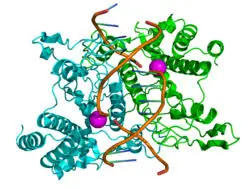Gene Restriction: How Scientists Cut and Control DNA
Gene restriction refers to the process of cutting DNA at specific sites using special proteins called restriction enzymes (or restriction endonucleases). These enzymes act like molecular scissors — they recognize short, specific DNA sequences and make precise cuts. Scientists use gene restriction in molecular cloning to isolate a particular gene or DNA fragment from a larger piece of DNA. Once cut, the DNA fragment can be inserted into a vector, like a plasmid, for further study or manipulation. Restriction enzymes are essential tools in genetic engineering, biotechnology, and DNA analysis because they allow researchers to work with genes in a controlled and predictable way.
